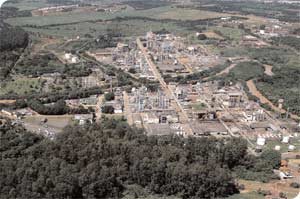Incentive Based Mechanisms for Reducing Greenhouse Gas Emissions
Examples of a CDM projects
Example 1: The French company Rhodia has two CDM projects in South Korea and Brazil at its factories where the chemical adipic acid is produced (used for making nylon). Nitrous oxide, a potent GHG, is released in the process of making adipic acid. The company has invested approximately 20 milion euros in equipment that destroys the nitrous acid at the two plants. This equipment has already been installed by Rhodia and other companies in most plants within the developed world (due to environmental regulations) but Rhodia had not done so in its plants in South Korea and Brazil. As a CDM project, Rhodia receives credit for this GHG reduction of 15 million certified emission reductions expressed in CO2 equivalents (nitrous oxide is 298 times the warming potential of CO2) which can be used in its ledger in Europe (or sold on the EU exchange). In 2007 Rhodia earned approximately 280 million euros in these these credits — while the price of carbon credits have declined since these CDM projects represent a profitable investment for Rhodia — more profts than from the actual production of adipic acid itself.

Example 2: The biogas CDM Project of Bagepalli Coolie Sangha is in its early stages. It is run by a community organization of poor rural Indians (38,000 familes across 900 villages). The CDM project provides resources to construct over time 18,000 biogas digesters (animal manure/organic waste + anerobic conditions = biogas composed of methane and carbon monoxide/dioxide which can be burned for cooking and water heating. The emissions benefit is the replacement of kerosene and nonrenewable wood fuel from local forests. The funding for the program is provided by the FairClimateFund, a nongovernmental organization who provides funding for small-scale pro-poor emission reduction projects. While farmers provide their labor, FairClimateFund provides resources necessary to purchase materials for digester construction and upkeep. FairClimateFund is paid back for this initial investment through the CDM-sanctioned carbon credits the project produces which it in turn sells on the European Union’s carbon credit market. Similar small-scale biogas programs have been operating in neighboring Nepal. A major challenge these programs face is the difficulty of monitoring and documenting the net reductions in GHG emissions that result from the proper functioning of all of these digesters.

